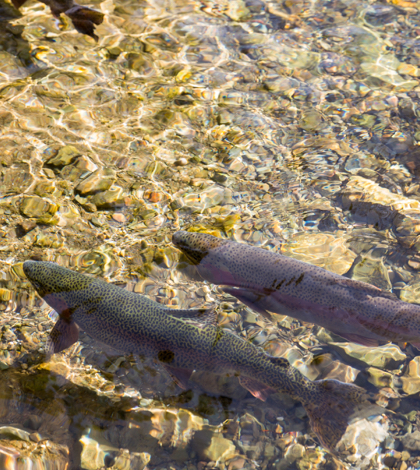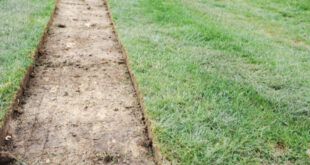Cooperative ventures, long-term plans and patience can pay off. Just ask the participants in the effort to nurture the return of Chinook salmon and steelhead on the Mokelumne River. Over 14,000 Chinook salmon have migrated to the Mokelumne River, continuing a record streak of returns dating back to 2011. The number of steelhead has more than tripled with more than 350 steelhead returning this season, compared to historical returns averaging about 100 steelhead per year.
Thanks to a collaborative partnership between the East Bay Municipal Utility District (EBMUD), United States Fish and Wildlife Service (USFWS) and the California Department of Fish and Wildlife (CDFW), the Mokelumne River is part of a 1998 agreement between the East Bay utility and federal and state agencies to promote healthier conditions and water flows in the Mokelumne River. The three agencies have spent nearly two decades developing and implementing a plan to improve spawning and rearing habitat in the river below Camanche Dam.
“This is a wonderful partnership that’s making a difference in Mokelumne River salmon and steelhead returns,” said Jay Rowan, senior environmental scientist, supervisor for CDFW’s northern and central region hatcheries. “There’s been a lot of cooperation and innovation taking place at the Mokelumne River Fish Hatchery in recent years and the fish are benefitting as a result.”
The impressive fall returns are the result of combined efforts. These have included focused water operations, including managing cold water in Camanche and Pardee reservoirs to attract salmon, releasing pulse flows, Delta Cross Channel gate closures, and using tagging data to evaluate hatchery release strategies. Innovative measures have included feeding a specialized diet to assist the salmon in their freshwater-to-seawater transfer. Juvenile salmon experience significant physiological stress when moving from their natal freshwater habitat to the Bay’s saltwater environment. The specialized diet includes higher salt levels to ease their transition.
Also, transporting juvenile salmon by barge and releasing them into San Francisco Bay aids in their survival. It may also help juvenile salmon with imprinting for their return to their natal waters.
“As a water agency that is a vital partner on the Mokelumne River, we’re thrilled to see continuously strong returns,” said EBMUD Manager of Fishery and Wildlife Jose Setka. “For EBMUD, the health of natural ecosystems is critical to our watersheds and a vital part of our mission. This river partnership has enabled management decisions that have improved the survival of salmon and steelhead. By improving habitat, updating hatchery practices, better coordinating Delta operations and continuing scientific studies, the Mokelumne River fish population will be model for recovery.”
Additional strategies for improving the annual returns of Chinook Salmon and steelhead include:
- Stronger Pulses – Pulse flows reached higher magnitudes compared to recent years thanks to flood control waters released from Camanche Reservoir. These pulses provide cues for salmon to move up into the river. Additional pulses provided by reoperating Woodbridge Irrigation District Dam extended the period of pulses into November.
- Gate Closures – To prevent straying of Sacramento and Mokelumne River salmon, CDFW coordinated closures of the Delta Cross Channel Gates on weekdays and reopened for weekend recreation beginning in September.
- Habitat Improvement – EBMUD and its partners have restored spawning beds within the river and surrounding riparian habitat. Efforts have included working with local landowners to help identify win – win restoration projects that they could implement on landowners’ land.
- Tagging Data – Using Coded Wire Tag data from returning fish, the cooperative has measured the effectiveness of releasing fish on outgoing tides and limiting releases to no more than two consecutive days from the same location to increase juvenile salmon survival.
 California Water News Daily Your Source For Water News in California
California Water News Daily Your Source For Water News in California


